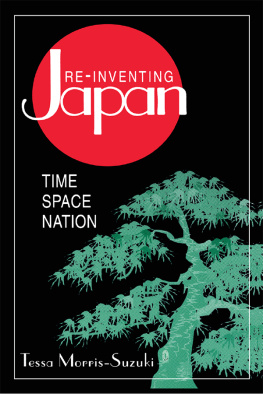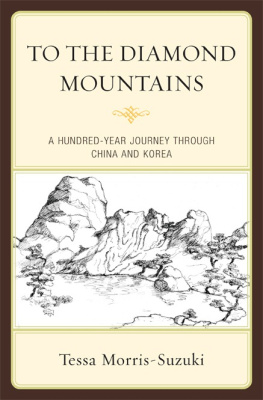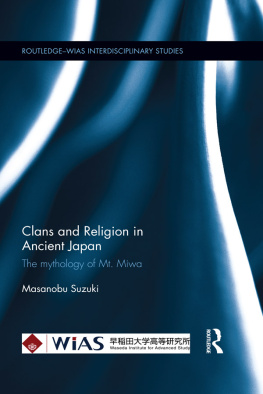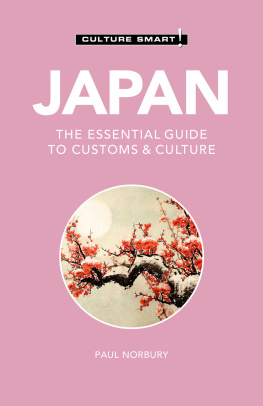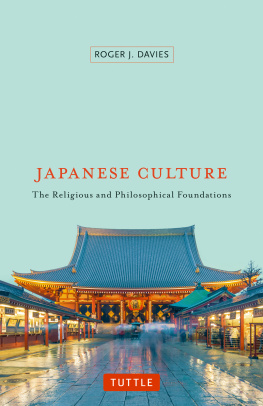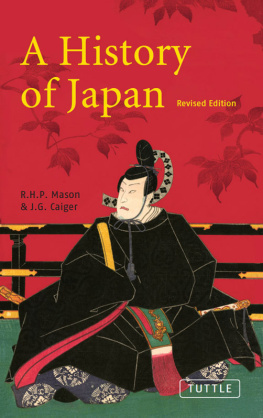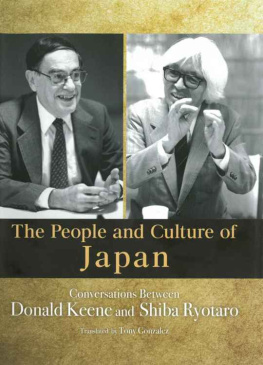RE-INVENTING
Japan
Japan in the Modern World
Series Editor: Mark Seiden
Tessa Morris-Suzuki
Re-Inventing Japan:
Time, Space, Nation
Laura Hein and Mark Seiden, eds.
Living With the Bomb:
American and Japanese Cultural Conflicts in the Nuclear Age
Joe Moore, ed.
The Other Japan:
Conflict, Compromise, and Resistance Since 1945
New Edition
Gavan McCormack
The Emptiness of Japanese Affluence
Foreword by Norma Field
AMPO, ed.
Voices from the Japanese Womens Movement
Foreword by Charlotte Bunch
Kyoko and Mark Seiden, eds. and trs.
Foreword by Robert Jay Lifton, M.D.
The Atomic Bomb:
Voices from Hiroshima and Nagasaki
NAKAMURA Masanori
The Japanese Monarchy, 19311991
Translated by Herbert Bix et. al
Monica Braw
The Atomic Bomb Suppressed:
American Censorship in Occupied Japan
E. Wayne Nafziger
Learning from the Japanese:
Japans Pre-War Development and the Third World
Norika Mizuta Lippit and Kyoko Iriye Seiden, eds. and trs.
Japanese Women Writers:
Twentieth Century Short Fiction
Shigeru Sato
War, Nationalism, and Peasants:
Java Under the Japanese Occupation, 19421945
Rob Steven
Japans New Imperialism
TIME, SPACE, NATION
Tessa Morris-Suzuki

An East Gate Book


An East Gate Book
First published 1998 by M.E. Sharpe
Published 2015 by Routledge
2 Park Square, Milton Park, Abingdon, Oxon OX14 4RN
711 Third Avenue, New York, NY 10017, USA
Routledge is an imprint of the Taylor & Francis Group, an informa business
Copyright 1998 Taylor & Francis. All rights reserved.
No part of this book may be reprinted or reproduced or utilised in any form or by any electronic, mechanical, or other means, now known or hereafter invented, including photocopying and recording, or in any information storage or retrieval system, without permission in writing from the publishers.
appeared as an article in Shis (September 1996). My thanks to Iwanami Shoten Publishers for permission to reproduce these sections in substantially revised form.
The author and publishers wish to thank the following individuals and organizations for permission to use copyrighted illustrations: Iwanami Shoten, for illustrations from Kinsei kagaku shis and Shizuka na laicht; Meich Kankkai for the illustrations from Kita Ezo Zusetsu; Rykei Shoten for the reprinted illustrations from Tokyo Puck; Nippon Hos Shuppan Kykai for the cover illustration from NHK dorama gaido Oshin; Kodansha Ltd. for the illustration from Tate shakai no ningen kankei; and Ms. K. Moriki for the illustration from Kokusai kekkon handobukku, published by Akashi Shoten.
Library of Congress Cataloging-in-Publication Data
Morris-Suzuki, Tessa.
Reinventing Japan: time, space, nation / Tessa Morris-Suzuki.
p. cm.(Japan in the modern world)
Includes bibliographical references and index.
ISBN 0-7656-0081-1 (cloth : alk. paper).ISBN 0-7656-0082-X (pbk. : alk. paper)
1. Japan. I. Title. II. Series
DS806.M367 1998
952dc21 97-41873
CIP
ISBN 13: 9780765600820 (pbk)
ISBN 13: 9780765600813 (hbk)
Contents
Asian names are given in the normal order of family name followed by surname, except in the listing of authors of English language works in the bibliography. Macrons are included on long Japanese vowels except in the cases of place names and other words which are familiarly used in English (e.g., Tokyo, not Tky; Shinto, not Shint).
RE-INVENTING
Japan
Samuel Johnson defined a nation as people distinguished from other people (quoted in Fried 1975, 9). His definition is a particularly pleasing one because it exposes the enormous questions concealed inside this self-assertive little word. How do we distinguish between people? Where do we draw the lines? What gives us the confidence not simply to sum up 124 million Japanese, 80 million Germans, 1.1 billion Chinese, or 250 million Americans in a single word, but actually to turn these words into actors in the stories we tell: The Japanese are group conscious; the Germans are worried about Russian nationalism; the Chinese mistrust the Japanese; the Americans disapprove of the Chinese attitude to human rights, and so on.
These questions have nagged at me over twenty years of researching and teaching about Japan. In order to say anything at all it is necessary to generalize. So we use conceptual categories which will never be able to capture the fluid, iridescent stuff of reality in all its complexity. But the categories that we commonly use to study a phenomenon like Japannation, national culture, Japanese society, Japanese peoplebeg so many questions that they deserve closer scrutiny than they have received so far. Of course, the dividing lines between national, ethnic, and other identity groups have become the subjects of intense debate in the past few years; so much so that I can almost hear the sighs of readers or of casual browsers in bookshopsNot another book on national identity! But in the midst of this debate, key terms such as culture, ethnicity, and identity are often tossed around with such abandon that they themselves have become obstacles rather than aids to better understanding.
This book, then, is not an attempt to sketch a new model of Japanese culture or to say something novel about the origins and makeup of the Japanese race (jinshu) or ethnic group (minzoku). Instead, it is an attempt to delve into the categories of thought which underlie concepts of nationhoodthe notions of culture, race, ethnicity, civilization, and Japan itselfand discover how these categories have been used in the Japanese context. In the process, I hope to tease out some of the shifting meanings of these dividing lines between people and to consider the political and social implications of their use. It would be possible, of course, to write a whole book about the evolution of each concept in Japan, for all have long, complex, and fascinating histories. In the confines of a single volume, it is not possible to cover more than a small fraction of the historical and contemporary debates surrounding each. But the advantage of looking at several conceptual categories in a single study, however briefly, is that it helps us see the connections between them and to observe the ways in which imagery and concepts flow back and forth between the rhetoric of culture, natural environment, race, and civilization.
A theme running through the book is the relationship between time and space. In defining the boundaries of the nation and creating images of national belonging, governments, academics, and the popular media make use of both spatial and temporal dimensions. The nation is seen as a bounded geographic entity, whose shape is imprinted on the minds of children by maps on the walls of countless classrooms. It is also an environmental space, understood in terms of familiar imagery of climate and landscape. This sense of the nation as a spatially bounded natural entity is often closely connected with ideas of ethnicity: of citizens as sharing a genetic and cultural heritage adapted to the natural environment of the spatial realm in which they live. But nations can also be seen as time zones, separated from others by chronology rather than geography. From this point of view, the relationship between our nation and others may be understood as a relationship between a more advanced form of social system and more primitive forms. Our nation is often assumed to represent the present or future, while foreigners represent the past, though sometimes this imaginative relationship is reversed. Jawaharlal Nehru once remarked: We in India do not have to go abroad in search of the Past and the Distant. We have them here in abundance. If we go to foreign countries, it is in search of the Present (quoted in Chatterjee 1986, 138; see also Fabian 1983; Wallerstein 1991a). One aim of this study is to explore the varied and often closely interconnected ways in which the dimensions of space and time have been deployed in Japanese debates on nationhood.
Next page
